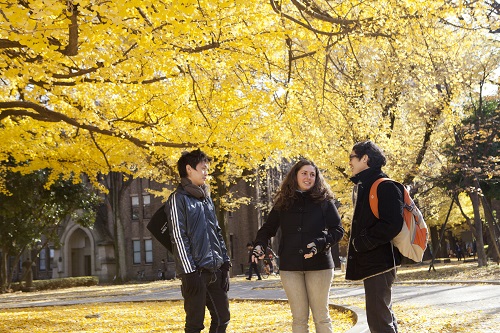Traces of Old Singapore

Have you ever looked at those old movies set in Far Eastern cities and wondered if the old Colonial bungalows and scuffling house servants were a fabrication of some demented director’s over active imagination?
Well, they really did exist, those graceful and squeaky clean residences, cooled by massive ceiling fans, relics of an even more gracious age. Life as a Colonial brat was charmed indeed. Part of a matched set of spoiled, over indulged teenagers, I spent my weekend hours lolling in a whicker chair at the Tanglin Club, while smiling houseboys brought me tall glasses of freshly squeezed lime juice in sugar encrusted glasses.
The Swimming Club at Katong was another haunt of ours, the pool there was massive and featured scary diving boards but it was not very cool to admit you had never actually dived from one of them. A particular fad in the late sixties was to go bowling at the American Club. Crowds of us would congregate at the poolside tables afterward drinking coca cola and being generally brat-ish until Daddy’s driver arrived to take us home.
We were living a particular fantasy in those severely numbered days. Our daily routine was pampered and without any grounding in reality. Boarding school summer breaks were very long, stretching into nearly two months, plenty of time to acquire the deep suntan so prized by young ladies of that era, to while away the days playing tennis and swimming in the sea at Changi, water skiing whenever we could appropriate a boat, exploring the little islands lying off the coast and generally spending the entire holidays being a completely worthless waste of space.
During the whole of my early teens I cannot remember having to launder a single item of clothing. It was all done by willing hands and smiling faces, our fashionable bungalow in the suburbs was staffed by a cook, his wife who was our housekeeper, a driver (called a syce) and a gardener. So early in the morning I would shower and head off to whichever swimming pool had been appointed as meeting place by my friends, not returning until the early evening, sunburned and exhausted from the efforts of entertaining myself in this Colonial paradise.
Unbelievably, Singapore in those days was reasonably flat. By that I mean we did not have skyscrapers, in fact I remember being deeply impressed by the old department store, Robinsons, which was only a few stories high. The Malaysia Hotel and the Goodwood Park Hotel were equally awesome but still nothing like the towering edifices on show in Singapore today.
Teenagers led a charmed and pleasurable life, sponsored by the British club system. You did not have to produce large amounts of cash to eat and drink, because of course everything was charged to the parent’s account, the bill presented at the end of the month. Whereas nowadays you might lecture your son or daughter on the state of their mobile phone bill, in those days the issue was whether you had eaten in the Club too often, running up a huge bill for entertaining. Most of us had parents crushed beneath the weight of guilt for sending us to boarding school in the first place so the bills were usually paid and forgotten very quickly until the next fell due, by which time you were likely to be on your way back to school and safely out of earshot.
The villages, known as Kampongs, lined the roads either side and were full of smiling Malays and Chinese, who greeted you as you walked past. I was recently saddened to see on the web a school trying to raise funds to save the last surviving kampong at Pulau Ubin. We went to so many celebrations, mostly weddings in these lovely villages and were welcomed by beautiful girls wearing their traditional sarongs, flowers in their hair, their heads bobbing from the weight of beautiful long hair wound into complicated styles with combs and pins, and their arms straining with the weight of trays of delicious food for their guests.
Nowadays, apartment living has triumphed and European fashions have taken the place of the sarong and the Cheong-Sam, the traditional and so flattering Chinese dress with Mandarin collar, seen everywhere in bygone days. The cinema was very popular then, as most television programs were annoyingly flawed by the poor reception. For some reason ladies wore full length gowns to the cinema, although their gentlemen escorts still wore knee length shorts and short sleeved shirts. Provided the gentlemen wore knee length socks, their dress was considered to be highly appropriate. An elderly lady told me once that in the cinemas in Singapore in the old days, the cockroach problem was so severe that ladies wore long dresses, so they could fold their legs up beneath them and still preserve some modesty. I never was able to confirm this tale as fact or fiction though, so today I am none the wiser as to its accuracy.
Home life was very different to the routine of today. Dinner was prepared each evening by the resident cook and was always absolutely delicious. We were served at table by the amah in her black and white uniform; stuffed crabs, Malay curries and English puddings. Local food was served regularly, massive platters of Nasi Goreng (fried rice) accompanied by fried spiced chicken or fish. China tureens would be brought into the dining room containing chilled sago, accompanied by a little sauce boat full of sticky Gula syrup and another full of coconut milk. You would place a portion of sago in a dish, and then pour over the gula and the coconut milk. The result was something resembling a crème caramel in taste but oh, so much better.
Of course any excuse was found to have a party as such affairs were organized so easily by the servants. Early in the afternoon, paper lanterns and fairy lights would be strung from the trees and the local bottling company would arrive with dozens of extra tables and chairs. The party furniture was supplied free in consideration of a large order of mixers. Any unwanted bottles were taken away afterward and credited to one’s account. The Satay Man was always invited to attend, a little man who rode a bicycle containing a barbecue kit. His grill was set up usually under a sheltering tree, and succulent little skewers of tender chicken, beef or pork would be served to guests at something like a penny a piece. The Satay Man would provide a selection of dips and arrange them on a convenient wall or table so that diners might have their pick of the sauces available. The best was the traditional satay peanut sauce and it was hot with chillis and spices.
It was not in the least unusual to find your best dinner service being used in the house next door at Christmas or at parties. The cooks and amahs would run a highly efficient swap service and family heirlooms were often pressed into service to help out with a christening or a twenty first birthday party down the road. The teenagers of today have missed so much delight by being born too late. Those days are gone and can never be recovered, only remembered with affection and nostalgia.







